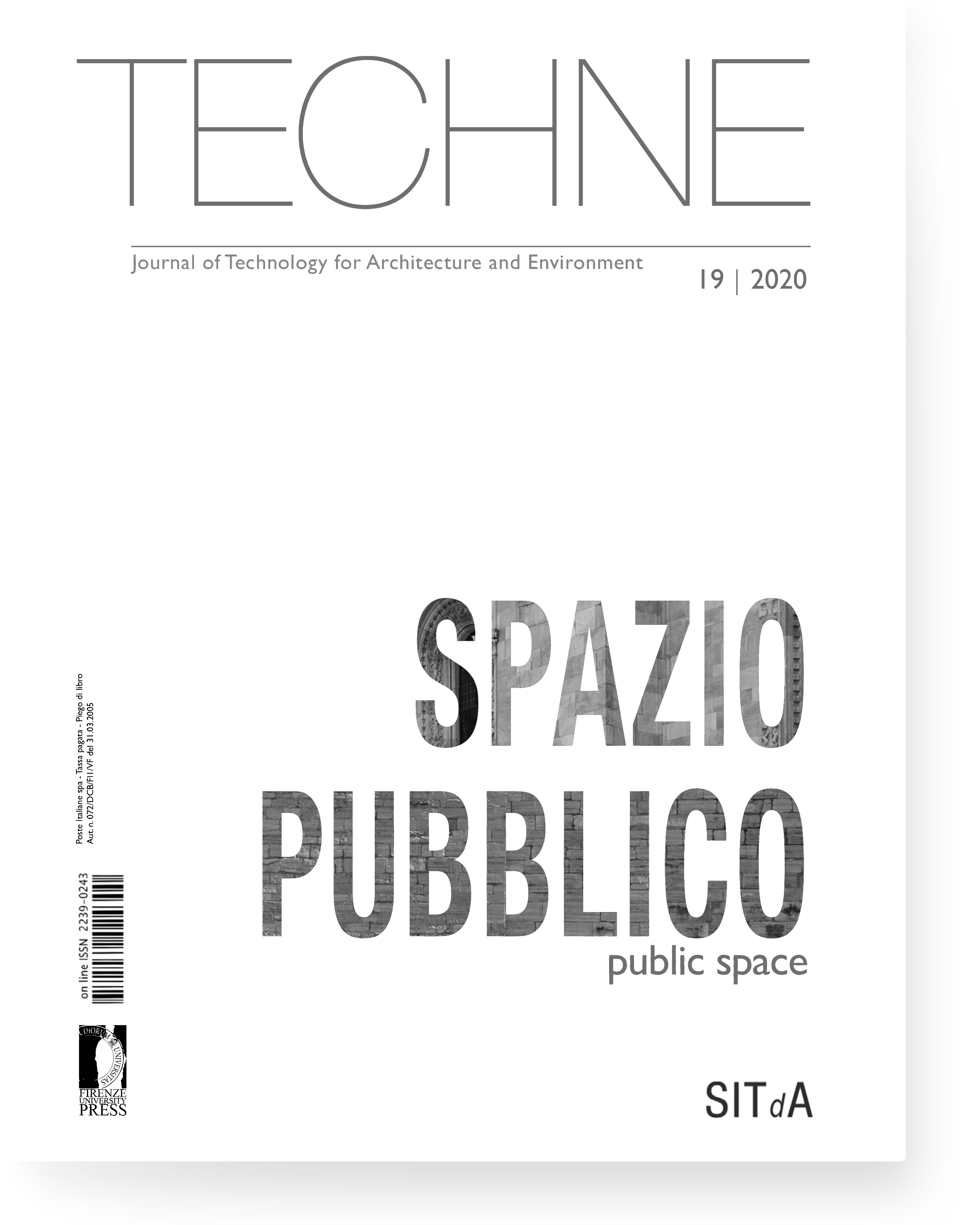Published 2020-01-24
Keywords
- Retrofitting,
- Green building,
- Public space,
- Ecosystem quality (durability),
- Environmental well-being
How to Cite
Abstract
The scientific community has for some time seen a growing awareness that to effectively impact the city’s environmental and ecosystem quality, it is necessary to act not by the sum of point-by-point interventions (as those albeit virtuous ones on the scale of improving the efficiency of the individual buildings have been for decades), but systematically on the urban fabric and on significant parts of it. This is what is represented in the research and in the related applicative experimentation, the result of the combination of two financing operations - the third-party one of a major national body, and the university financing won in a selective competition. These financing operations aim to develop retrofitting actions for public spaces, applied to an area of Rome with established and decayed settlements. The essential idea is to build a use model of “types” of technological/design interventions for their implementation and future application to other settings with similar characteristics, albeit with the essential adaptivities to differences, in such a way as to give the experimentation the role and character of a constant development in progress in methodological approach and in defining strategic and operative frameworks.






